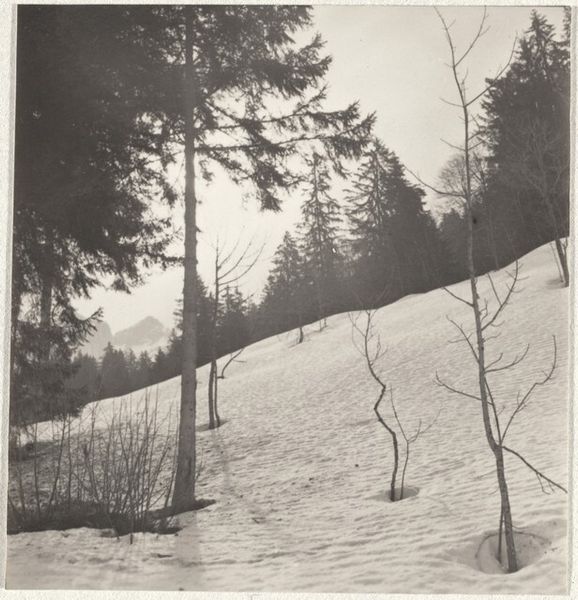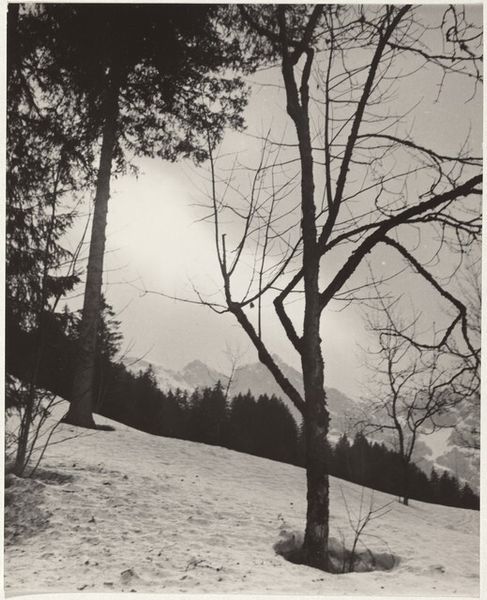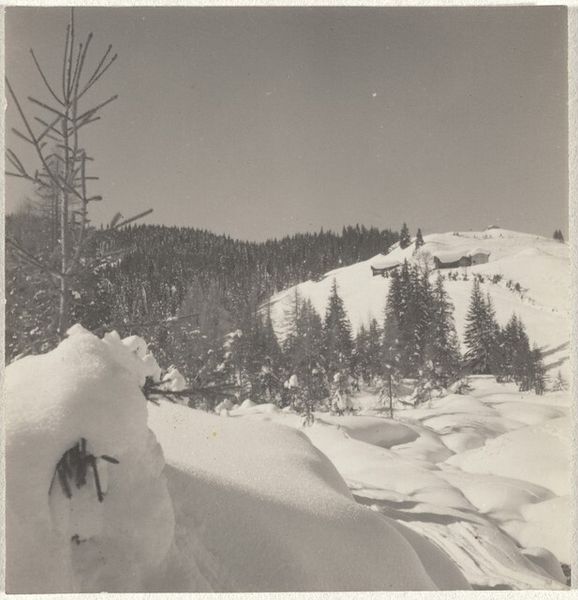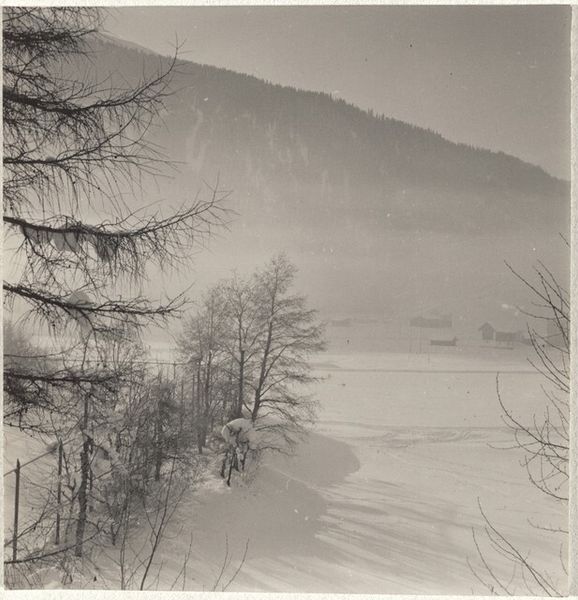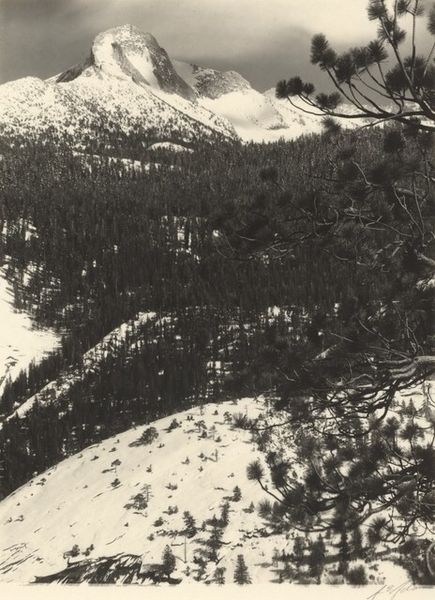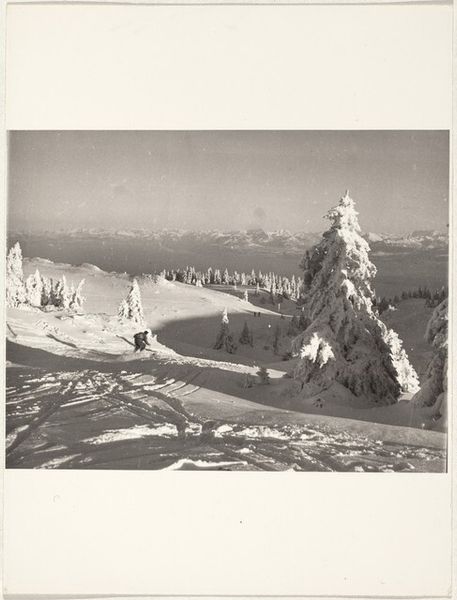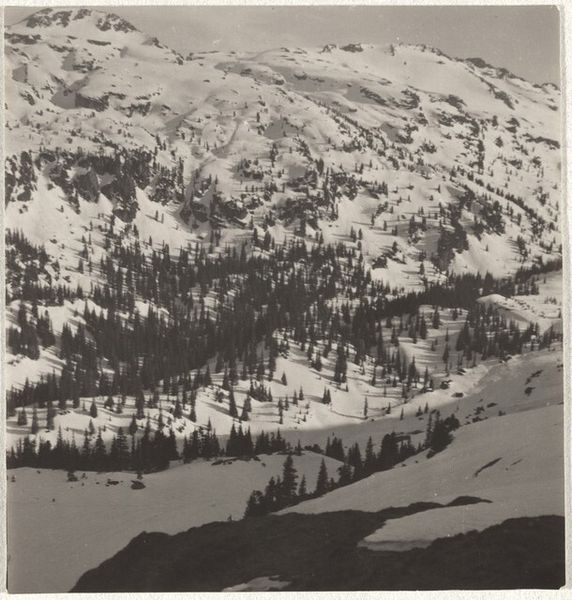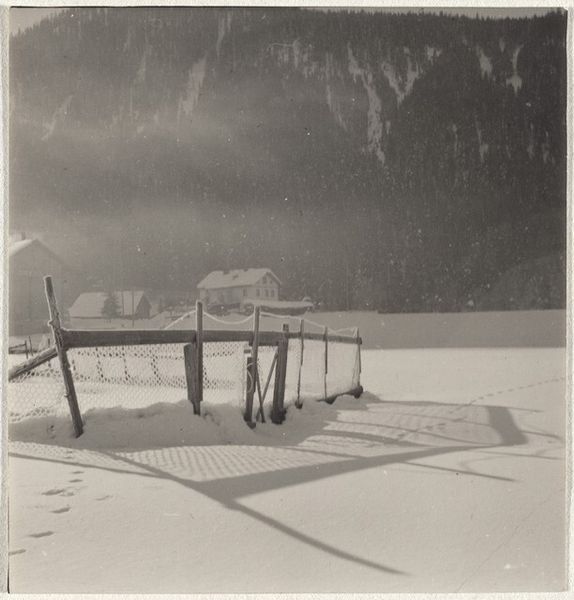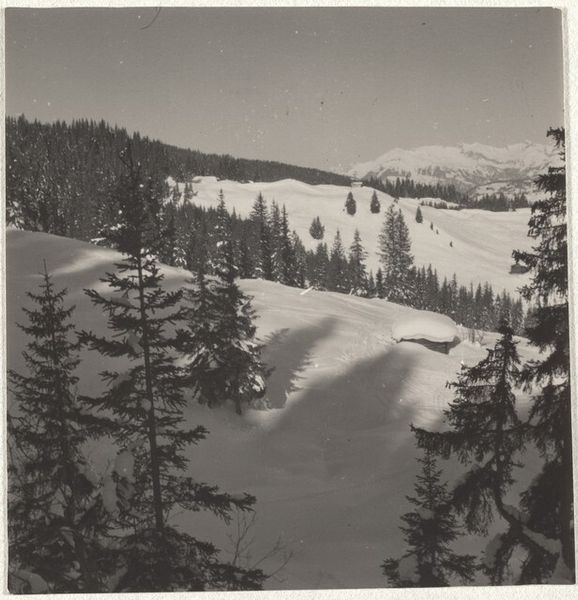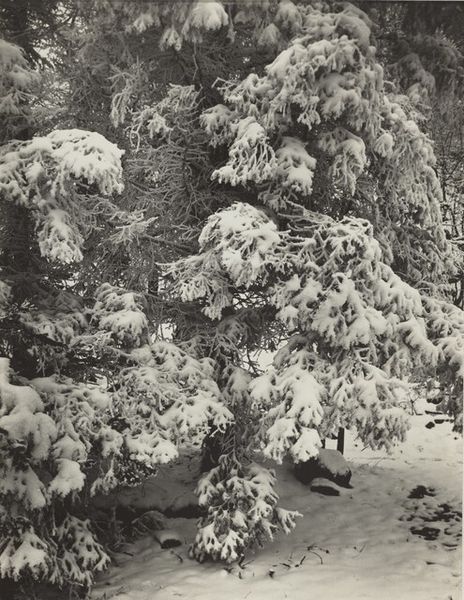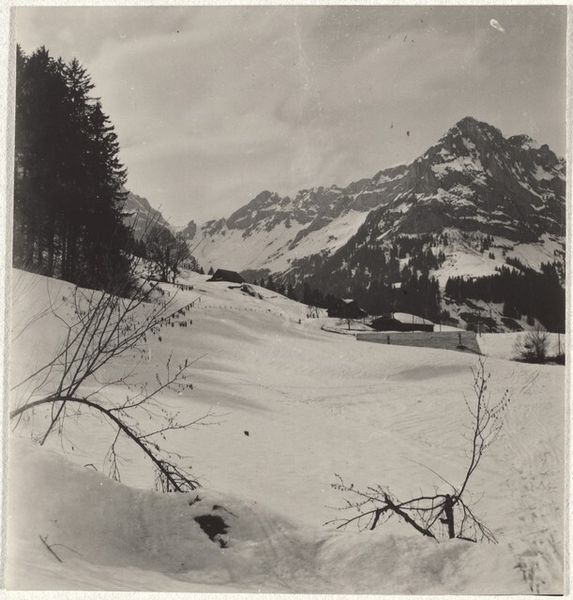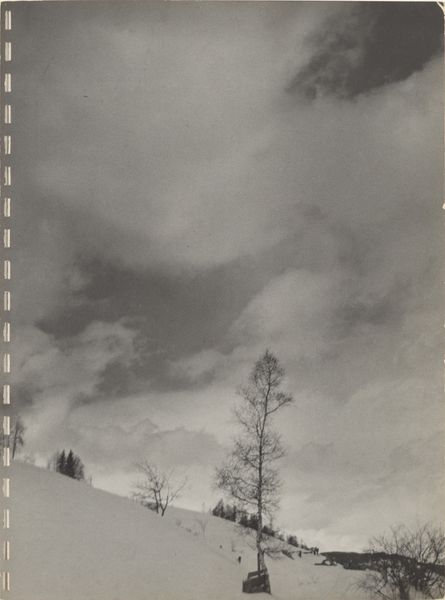
print, photography, gelatin-silver-print
# print
#
landscape
#
photography
#
gelatin-silver-print
#
monochrome photography
#
realism
#
monochrome
Dimensions: sheet (trimmed to image): 5.7 x 5.5 cm (2 1/4 x 2 3/16 in.)
Copyright: National Gallery of Art: CC0 1.0
Curator: This gelatin silver print by Robert Frank, entitled "Trees in Snow—Landscape", dates roughly from 1941 to 1945. There's something so simple yet compelling about its stark beauty. Editor: Immediately, I am struck by the texture of the snow. It appears almost sculpted. The contrast between the crisp white snow and the bare branches creates a moody and isolated atmosphere. It almost seems desolate, don’t you think? Curator: Considering it was made during World War II, the desolation might speak to that experience of pervasive hardship, both social and material. Frank, though a Swiss national, probably felt the war's effects on the raw materials for creating his work. Gelatin silver prints required very specific supplies. How were those affected at the time? Editor: It's precisely that scarcity which draws me to it. There's a very basic and raw quality. And Frank chooses a decidedly unspectacular view. There's a whole history of landscape photography depicting the sublime, grand vistas—here we are given humble bare trees, the traces of feet on snow, it's a kind of poetry rooted in the everyday experience. What were institutions and galleries displaying during this period that gave Frank the impetus to photograph in this way? Curator: Great question. Galleries were still showing established, often celebratory work. Something like this might have been perceived as somber, perhaps even too straightforward, without overt symbolism. It presents labor frankly, almost a documentary approach within landscape art, moving away from a constructed idyllic view of the world. And thinking of labor, I wonder how Frank conceived of this landscape through his body, having to trek to the location and developing it himself with the limitations placed by external restrictions? Editor: The physical effort is implicit in the directness. This wasn't captured in a studio. The lack of idealization— the almost casual composition– suggest to me the reality of the making process itself. I now wonder where in Switzerland this was taken? I find the composition more moving, realizing the scene exists outside the boundaries of conflict, untouched, or at least attempting to ignore the surrounding historical context. Curator: This quiet, unassuming scene really offers a space for contemplation amidst such turmoil, highlighting Frank’s ability to find beauty in seemingly ordinary landscapes, regardless of surrounding conflict. Editor: I agree. Thank you for enriching the piece. It feels rewarding to know that our exploration offered a newer reading to someone experiencing art at such an isolated time.
Comments
No comments
Be the first to comment and join the conversation on the ultimate creative platform.
